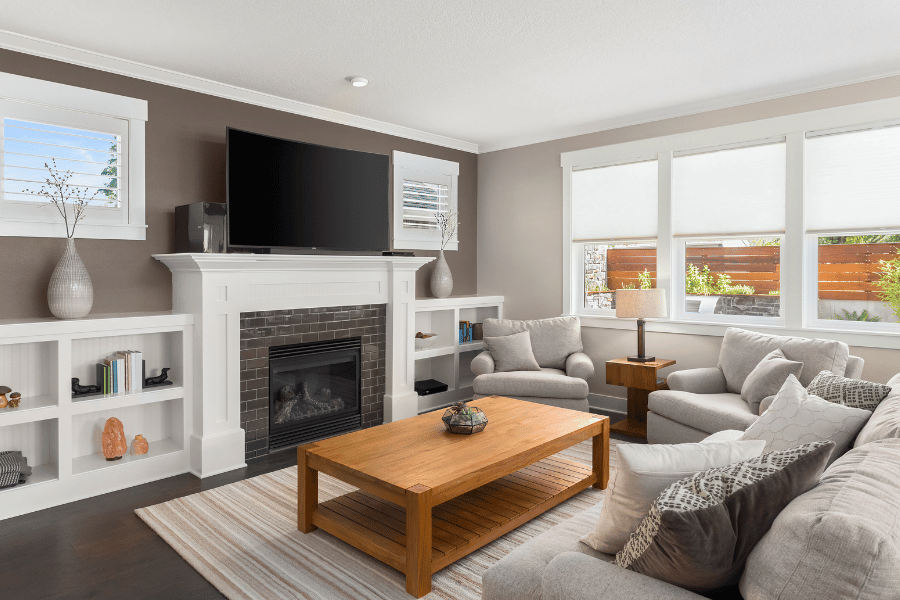When it comes to painting your home, whether it’s the exterior or interior, primer is often a step that’s either overlooked or misunderstood.
Some homeowners may see it as an unnecessary additional step in the process, but in reality, primer plays a crucial role in achieving a high-quality, long-lasting paint job.
In this article, we’ll explore what primer is, why it’s important, and when it’s necessary to use it.

What Is Primer?
Primer is a preparatory coating applied before the actual paint. Think of it as the foundation for your paint job, providing a stable surface for the paint to adhere to. It helps seal the surface you’re painting, creating a uniform base that allows the paint to spread evenly and stick better.
Primers are typically made of resin, solvents, and additives that help block stains, cover existing colors, and create a bond between the surface and the topcoat of paint.
Why Is Primer Important?
Primer serves several important functions that can make a significant difference in the outcome of your painting project. Here are a few key reasons why using primer is often essential:
1. Ensures Paint Adheres Properly
One of the primary purposes of primer is to create a surface that allows the paint to adhere properly. If you apply paint directly to a porous or uneven surface, it may not bond well, leading to peeling or chipping over time.
Primer acts as a bonding agent, ensuring the paint sticks to the surface and remains durable.
2. Blocks Stains and Prevents Bleed-Through
If the surface you’re painting has stains, such as watermarks, smoke damage, or other discolorations, primer helps block these stains from bleeding through the final coat of paint.
Without primer, these blemishes could show through even multiple coats of paint, leading to uneven color and a less professional finish.
3. Improves Coverage and Color Accuracy
Painting over dark or bright colors can be a challenge, as the original color may show through lighter or more muted shades. Primer helps to neutralize the underlying color, ensuring that your chosen paint color appears true to its shade. This can also reduce the number of coats of paint needed, saving time and money.
4. Seals Porous Surfaces
Bare drywall, wood, and masonry are porous surfaces that can absorb paint unevenly. Applying primer first helps seal these surfaces, preventing the paint from soaking in unevenly and providing a smooth, uniform finish.
This is particularly important for new construction or homes that have had extensive repairs.
5. Increases Paint Durability
Using a primer increases the overall durability of your paint job, helping the paint withstand wear and tear over time. It can also enhance the paint’s resistance to moisture, which is especially important for exterior surfaces and areas prone to humidity, such as bathrooms and kitchens.
When Is Primer Necessary?
While primer is beneficial in many situations, it’s not always required. Here are some instances when primer is absolutely necessary and others where you might be able to skip it.
When to Use Primer:
- New, Bare Surfaces: If you’re painting new drywall, bare wood, or masonry, primer is essential. These surfaces are often porous and will absorb paint unevenly without a primer to seal them first.
- Drastic Color Changes: When you’re making a significant color change, especially going from a dark color to a light one (or vice versa), a primer will help ensure the new color is vibrant and true to its shade.
- Stains or Odor Issues: If the surface has stains from smoke, water damage, or other discolorations, primer will block these blemishes and prevent them from showing through the paint. Additionally, if you’re painting over a surface that has absorbed odors (such as from pets or smoke), a stain-blocking primer can help seal in the smell.
- Glossy Surfaces: Surfaces with a glossy finish, such as certain types of wood or previously painted trim, need primer for the new paint to adhere properly. Glossy surfaces are slick, and paint will struggle to bond without the primer acting as a bridge between the two.
When You Might Skip Primer:
- Repainting with a Similar Color: If the existing paint is in good condition, and you’re not making a drastic color change, you may not need primer. A high-quality paint with built-in primer might suffice.
- Surface Is Already Sealed: In cases where the surface has already been sealed or painted with a high-quality coating, primer might not be necessary unless there are specific issues like stains or peeling.
Choosing the Right Primer
Just like paint, primers come in various types designed for different surfaces and situations. Oil-based primers are great for sealing wood and preventing stains from bleeding through.
Water-based primers are typically easier to clean up and work well for most interior walls. Shellac primers are excellent for covering tough stains and sealing odors but can be more challenging to work with.
When selecting a primer, consider the surface you’re painting, the condition of the surface, and the type of paint you’ll be using. Your local paint store or painting professional can help guide you to the best choice for your project.
Final Thoughts: Is Primer Necessary?
In many cases, primer is a crucial step in achieving a professional and long-lasting paint job. While it may be tempting to skip this step to save time or money, using primer can prevent common issues like peeling, uneven color, and frequent repainting. For most painting projects, especially when working with new surfaces, stains, or color changes, primer is essential to ensure the best results.
The next time you’re tackling a painting project, take the time to assess whether primer is needed. It might just be the key to a flawless finish!

Leave a Reply